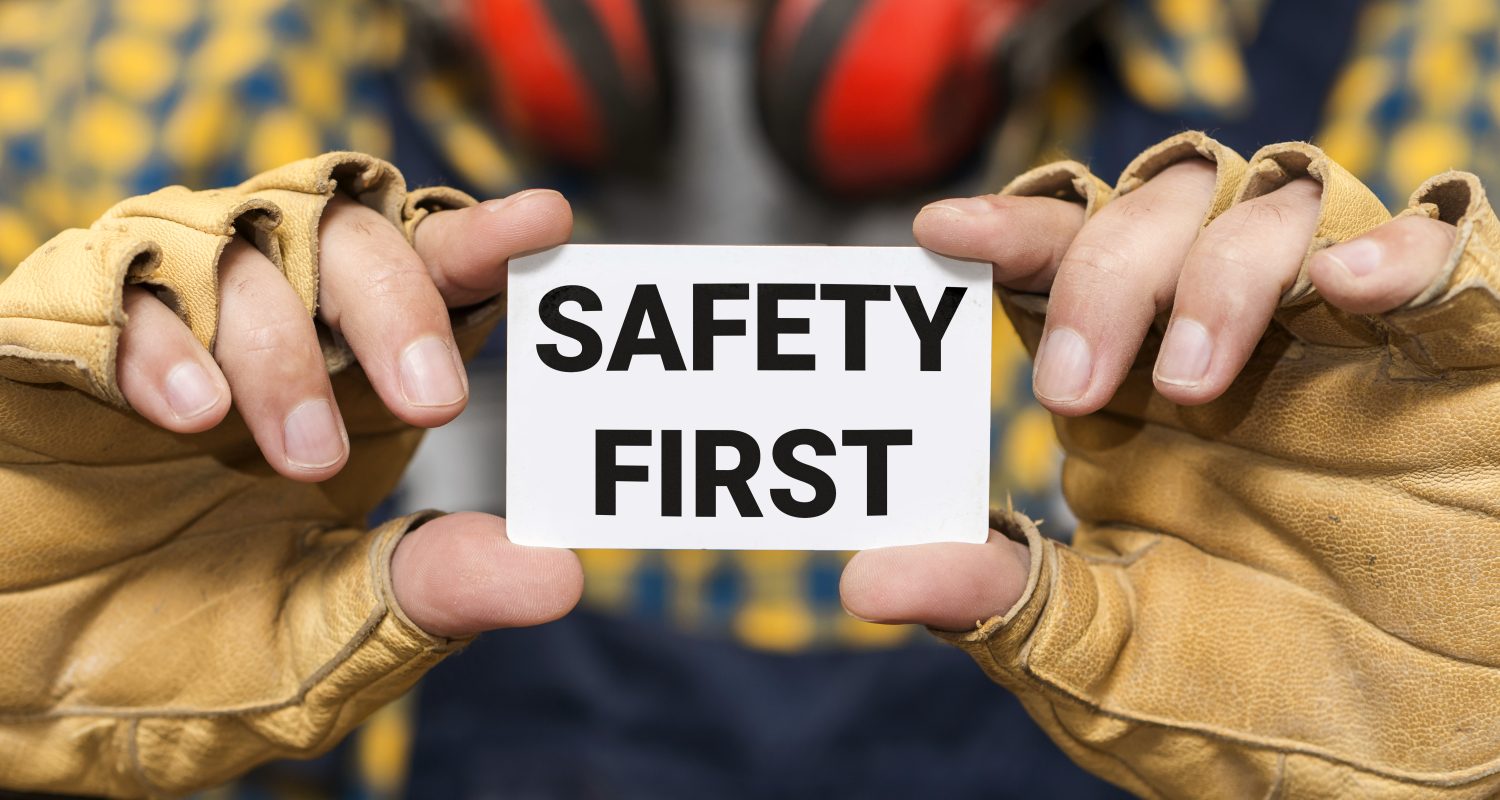|
Getting your Trinity Audio player ready...
|
In today’s competitive business environment, the workplace safety culture is increasingly recognised as vital to organisational success. It isn’t merely a regulatory compliance issue; it’s a pivotal factor that can enhance productivity, foster employee morale, and, ultimately, drive better business outcomes.
It involves shaping the attitudes, behaviours, and practices of everyone within the organisation to prioritise safety in every aspect of work.
What is a Safety Culture in the Workplace?
Workplace safety culture is an organisational ethos marked by shared beliefs, practices, and attitudes that define how safety is managed within the work environment. It embodies the collective approach of an organisation towards the prevention of accidents and the promotion of safety consciousness.
It determines how employees act and respond when safety-related decisions need to be made, consciously or subconsciously.

Importance of Safety Values:
Safety values form the foundation of a safety culture. They reflect the organisation’s core beliefs about safety and guide safety-related decisions and actions. For instance, the idea that all accidents are preventable is a safety value.
Similarly, the conviction that safety is everyone’s responsibility is another essential safety value. The main importance of safety value is that it helps in building the environment of the workplace and helps you in boosting your morale and strength to complete the work with full potential.
The 5 Elements of a Workplace Safety Culture
Several key elements need to be incorporated to cultivate a positive safety culture:
Communication:
Clear, consistent, and open communication about safety policies, procedures, and expectations is crucial. Providing examples of behaviours, decisions, and attitudes that accurately reflect your organisation’s vision is also essential. If individuals at all levels of your organisation reinforce these positive examples, it can aid in reinforcing the necessity of statements regarding workplace health and safety policy.
Management Commitment:
A strong safety culture begins with the management staff. Through their actions and policies, leadership must demonstrate that safety is a top priority. Employees are likelier to do the same if the management team prioritises safety and sets a good example.
Employee Participation:
Employees must actively engage in safety initiatives and have a voice in safety-related decisions.
Accountability:
Regardless of their role, every individual in the organisation must be held accountable for upholding safety standards.
Training and Education:
Regular exercise ensures all employees have the knowledge and skills to work safely.

The 4 Types of Workplace Safety Culture:
Organisations typically fall into one of four categories when it comes to their safety culture:
Pathological: Organisations that show little concern for safety until an incident forces change.
Reactive: Organisations that take action only after an accident has occurred.
Calculative: Organisations with systems in place to manage safety are often driven by external regulations.
Generative: Organizations where safety is an integral part of the business, deeply embedded in their everyday practices. It
Examples of a Safety Culture:
Consider a manufacturing company with a proactive safety culture. Regular safety training sessions are held, and employees are encouraged and rewarded for identifying potential hazards. A transparent system exists for reporting and addressing safety concerns, fostering trust and promoting open communication.
Predominant Safety Challenges in the Workplace
The workplace environment can be fraught with various safety issues and hazards. Broadly, they can be grouped into three categories:
- Human Factors
- Health Risks
- Environmental Considerations
Human Factors
Human factors encompass the organisational, occupational, and environmental aspects that impact an individual. These variables can steer human behaviour in the workplace across various sectors, resulting in unsafe practices, conditions, and behaviours.
They include:
- The burden and nature of tasks to be performed at work.
- Standard work procedures.
- Organisational environment, comprising workplace design, culture, and atmosphere.
- Team dynamics and management structures.
- Incidents of violence and interactions with others.
- Workplace resources.
- Individual attributes, such as competence, attitudes, risk tolerance, and mental health.
Often, human factors have incremental impacts on workers’ psychological safety and well-being. Various internal and external elements, like organisational stress, mental health disorders, financial issues, bullying and harassment, and substance misuse, can affect their work performance and physical health, regardless of the industry.
Major life events such as pandemics, international conflicts, or political upheavals also play a role. These can significantly impact a worker’s mental health, productivity, work style, and safety.
Health Risks
Health hazards are elements that can impact an individual’s health adversely. These include chemical hazards like dust, gases, vapours, and hazardous fluids, solids, or liquids that can cause burns, irritations, and respiratory problems.
Lack of adequate hygiene, leading to cluttered or misplaced equipment, can also compromise workplace safety. Disorganised wires, faulty machines, and broken items can disrupt work processes and cause harm to workers and bystanders.
Other common health and safety threats include:
- Biological hazards due to poor waste management, especially harmful liquid or solid wastes, could lead to radiation exposure.
- Physical, ergonomic safety risks like untrained heavy lifting and repetitive motions such as squatting, standing, reclining, and digging. Improper execution and inadequate training can result in serious, sometimes life-altering injuries or even fatalities.
- Industries most commonly exposed to health hazards include construction, manufacturing, healthcare, aviation, mining, and oil and gas.
Environmental Factors
Environmental factors pertain to an individual’s immediate work environment or job nature. Weather is a frequent environmental concern impacting workplace safety, especially for field workers such as construction workers, electricians, and oil and gas drillers.
Noise levels can also present challenges; persistent loud noise can disrupt communication and the overall quality of work. Similarly, lighting issues can compromise workplace safety, as poor visibility due to insufficient or excessive lighting can increase the risk of injuries. Sudden changes in lighting can trigger migraines due to temporary blindness or eye dryness.
Significant fluctuations in temperature, such as extreme heat or cold, can also impact workplace safety. Abrupt and rapid changes can strain the body, hindering its efficiency.
The Ideal Safety Culture:
The ideal safety culture is one where safety is embedded in the organisation’s DNA. It’s an environment where everyone takes responsibility for their safety and the safety of others. Safety is prioritised over other considerations like productivity pressures or tight deadlines.
Positive Safety Culture Attributes:
Positive safety culture is characterised by proactive communication about safety issues, continuous commitment from management, frequent safety training, and a non-punitive approach to incident reporting. Such a culture encourages and values feedback and promotes learning from past mistakes to prevent future incidents.
Conclusion:
In essence, safety culture is an investment in human capital. An organisation with a strong safety culture values its employees, considers their well-being a top priority, and is committed to ensuring a safe working environment.
The impact of a robust safety culture extends far beyond reducing workplace accidents; it enhances employee morale, improves productivity, and reinforces the organisation’s reputation. In the face of the ever-evolving business landscape, the question for companies is not whether to build a safety culture but how to create one that genuinely protects and values its workforce.
Cultivating a safety culture at the workplace transcends mere adherence to health and safety regulations. It involves fostering an environment that prioritises employee value and safety. Everyone reaps the benefits when safety becomes ingrained in the company’s culture. Safety issues are minimised, morale is enhanced, and productivity skyrockets.
Thus, investing in a strong safety culture equates to investing in your most valuable asset: your people!
Related Links:


